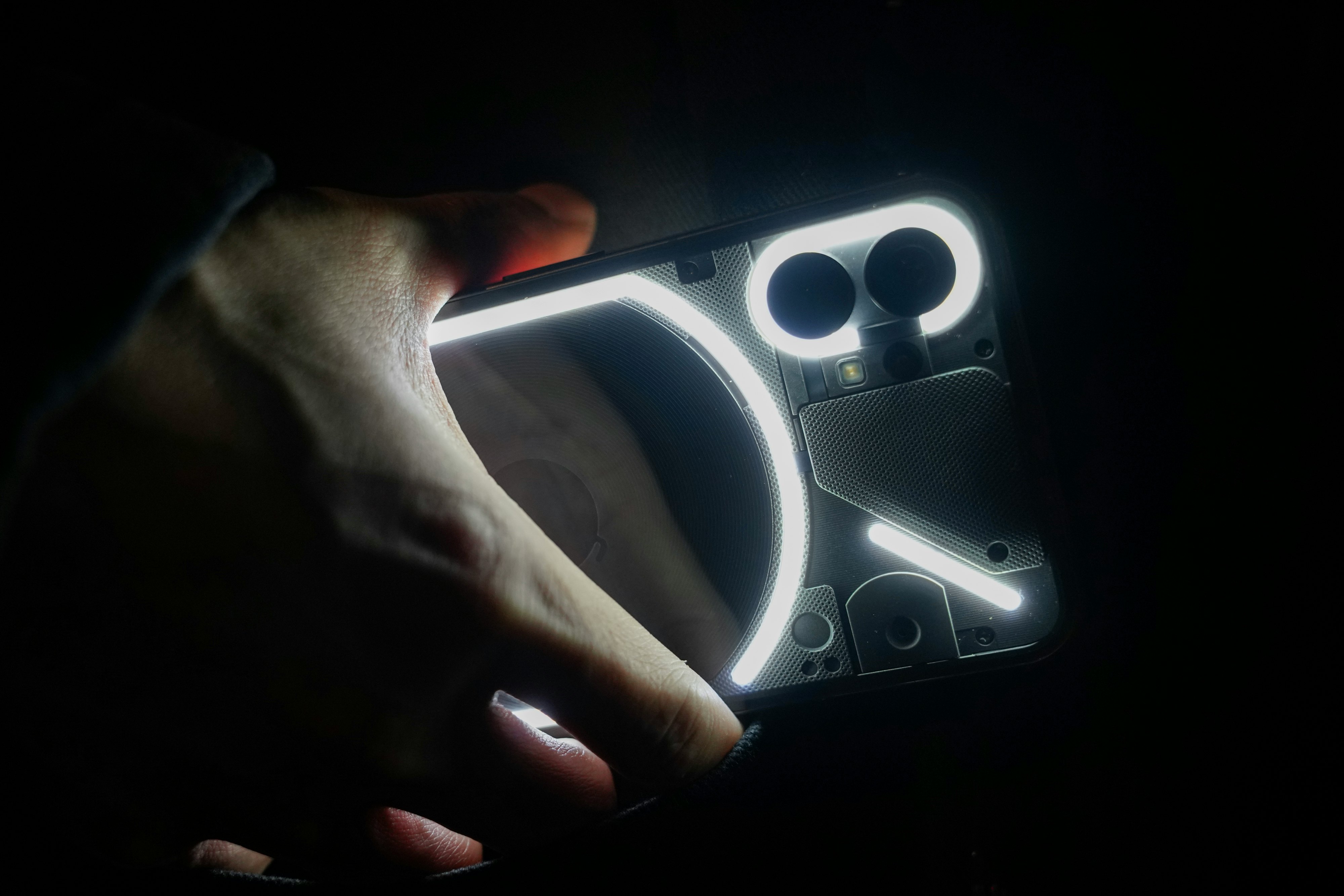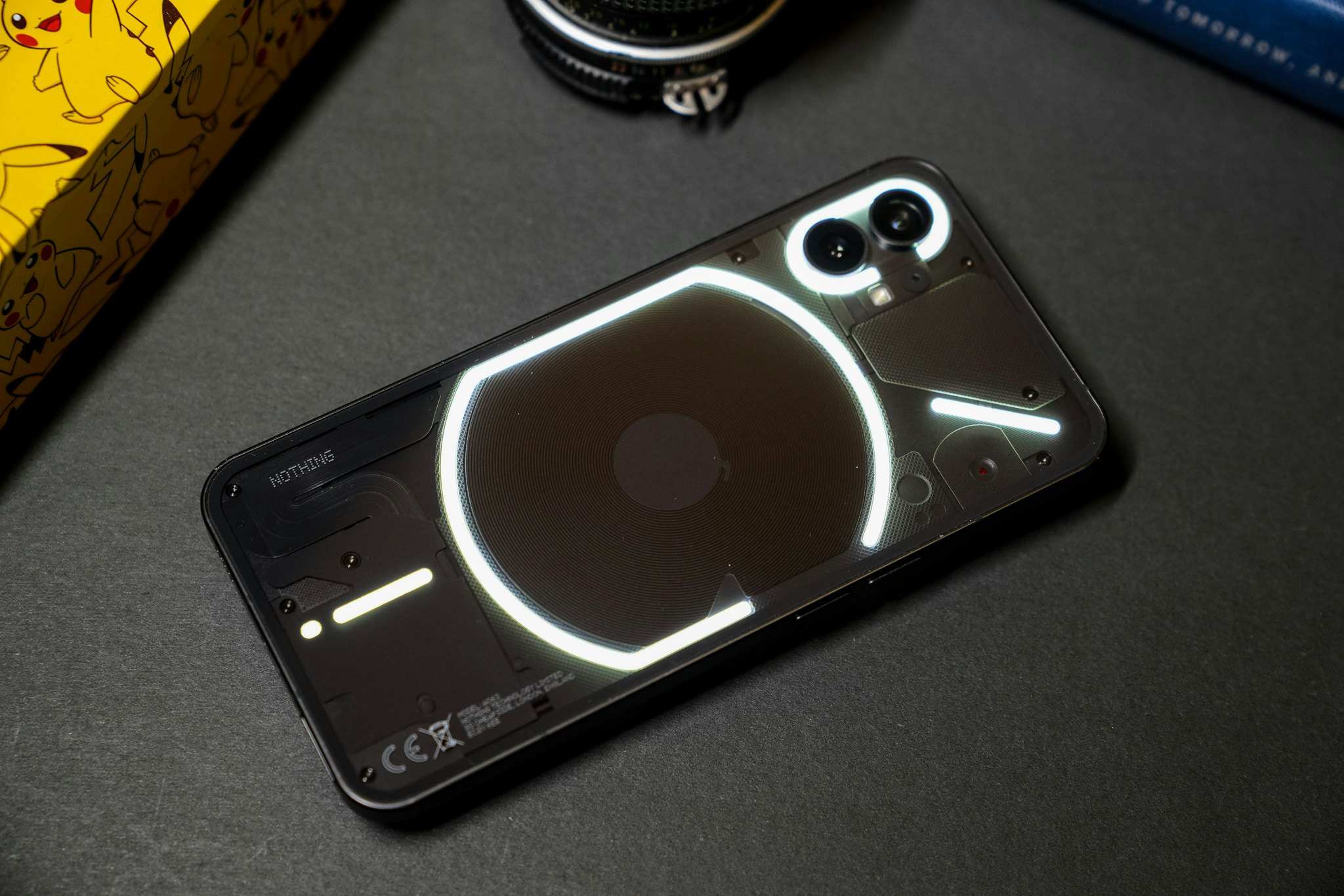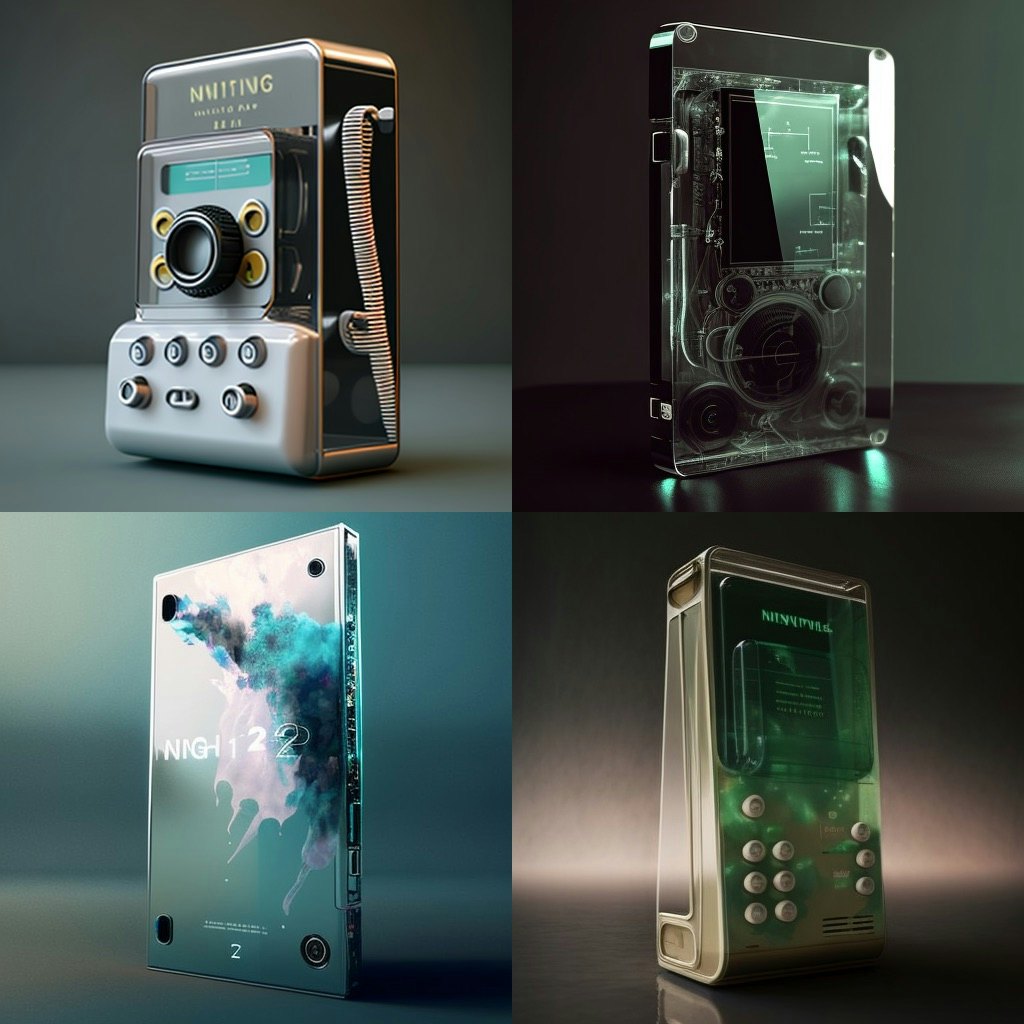
Were you bummed that Nothing’s Phone (1) didn’t get an official U.S. release when the transparent Android phone launched last summer?
Are you disappointed with the $299 “beta membership” for U.S. customers that gets you a Phone (1) with the caveat that it only supports the N41 5G band on T-Mobile and there’s no 5G connectivity on AT&T or Verizon?
That all changes this year.
Nothing CEO and co-founder Carl Pei has confirmed to Inverse that the company will make a significant push into the U.S. with its next flagship Android phone, the Phone (2), launching later this year. “We decided to make the U.S. our No. 1 priority in terms of markets,” Pei says.
“We couldn't do it earlier because we were only in our second year and our hands were tied building the team as we were building the products. Now as we're on a more solid footing, we can take a step forward.”
Party in the U.S.A
The important thing to know about Nothing is that it’s not just a company creating new gadgets. When you buy into the brand and its eye-catching transparent product designs, you’re going on a journey with the company. It’s a bit like building a ship as it sails across the sea. Supporting Nothing is risky because there’s no guarantee that things will pan out. Any number of unforeseen circumstances could crop up along the way. You have to be okay with the company starting from scratch, and patient as it builds teams at every level. Even with a veteran like Pei, who co-founded OnePlus and helped grow it into a global brand and powerhouse, that means understanding that Nothing is still figuring stuff out as it goes.
In several conversations over the past year, Pei has explained why Nothing had to build toward the Phone (1) with wireless earbuds first, and why they couldn’t just launch the phone in U.S. It really comes down to the numbers and logistics. For a startup, the Ear (1) was in many ways a test to gauge demand.
“We did almost 10x the revenue last year [in 2022 globally] compared to [2021],” Pei says. “We did more than $200 million USD last year; the first year we did something like $24 million USD. We're growing quite quickly. We shipped over a million products already.”

The astronomical growth in revenue and unit sales in regions with less red tape to launch products has provided two important things for Nothing. One: Proof that there’s demand for its products. And two: The volume has given the company more leverage with component suppliers and production factories that previously refused to work with them in the early days.
“When you make a smartphone for the U.S. you need to work with the carriers on certification and adapting some of their features into your OS,” Pei says. “We didn't have the resources for that before and now we do.”
The key word here is resources. Pei tells me that the company doubled in size last year, growing from 200 people in 2021 to 400 today. More people means more brains to work on stuff like carrier certification, quality assurance, marketing, retail logistics, etc. It’s basic Business 101.
“We're really excited about the U.S. market because it's a big country. If you look at our earbuds sales, about one-third comes from the U.S. And by not launching our phone in the U.S., we're leaving potentially a third of the volume on the table.”
“By not launching our phone in the U.S., we're leaving potentially a third of the volume on the table.”
It’s not just a business play. Pei says the company’s research indicates “[U.S.] consumers as a whole are quite bored and indifferent [with existing phones]” and “foot traffic into the stores for people checking out new phones hasn't increased.” With “not a lot of variety in terms of the smartphone products in the U.S. market” Pei believes Nothing can slide in and bring back fun hardware and competitive pricing.
Pei’s assessment of the U.S. phone market isn’t wrong. Smartphone shipments dropped 18.3 percent year over year this past holiday season, and declined 11.3 percent overall in 2022, according to IDC. That’s the biggest decline in annual phone shipments since 2013. Although the major drop in phone sales could be attributed to a several factors including constraints in the supply chain and inflation, it’s also true that smartphone innovation has pretty much plateaued with the majority of U.S. consumers choosing an iPhone from Apple or a Galaxy from Samsung. According to Counterpoint, as of Q3 2023, Apple commands 50 percent of the U.S. smartphone sales and Samsung has around 24 percent. The remaining 26 percent is split between Lenovo (6 percent), OnePlus (1 percent), and “others” (19 percent).
“From a business point of view, [Apple and Samsung] shouldn't go very niche and try something completely different because they might alienate current users. That's where smaller companies like us can come in and try and do something different. It's not that we're smarter or that they can't, but it just doesn't make sense for them to do it.”
Phone (2)
Is it any surprise that Nothing’s next Android phone will be called the Phone (2)? While Pei confirmed the smartphone name and its launch “later this year” he didn’t share with me what the device would look like.
“Should I just send you the Phone (2) renders?” Pei jokes. “That would destroy the launch. Maybe go to Midjourney and have [it] imagine something.” I chuckle at his response, but maybe...

“I tweeted before that we're not gonna launch [the Phone (2)] any time soon. And that doesn't mean we're never gonna launch it; I just got fed up with people launching phones every two months and not supporting them. The point I was trying to make is: let’s launch products with a healthy cadence and we're able to support the product on the software side and keep making it better.”
When I press him further for something on the Phone (2), he’s careful with his phrasing. “We’re developing a smartphone that’s more premium than the Nothing Phone (1) and software will be a big focus area for us,” Pei says. I tell him that “more premium” sure sounds like a smartphone that competes with the iPhone Pros and Samsung Galaxy Ultras and Pixel Pros of the world. I ask if we could expect specs like Qualcomm’s top-of-the-line Snapdragon 8 Gen 2 chipset as opposed to the mid-range one in the Phone (1). I draw parallels between the Phone (2), a premium phone that could potentially undercut the competition on price, and past OnePlus phones that offered flagship specs without the flagship pricing.
“I think the market and the industry have moved a lot since those days. For us, the Phone (1)'s spec sheet was pretty usable in terms of user experience,” Pei says. “Mobile chipsets have really improved over the last 7–9 years. That's why I want to avoid calling the Phone (2) a flagship because that would mean that the Phone (1) was not a flagship. Within our own portfolio of smartphones, the Phone (1) was very much a flagship in terms of the amount of care we put into the product. That's why I used the word ‘premium’ [to describe the Phone (2)] instead, which signifies that it’s a more premium step up, but it's still a flagship just like the Phone (1).”
“I want to avoid calling the Phone (2) a flagship because that would mean that the Phone (1) was not a flagship.”
We’ll have to wait to learn more about the Phone (2)’s hardware, but I think it’s safe to say that it’ll likely build on the transparent industrial design established by the Phone (1) and the rest of Nothing’s product lineup. I’d also bet that the Glyph interface — the customizable LED system on the backside of the Phone (1) — makes a return on the Phone (2), this time perhaps with an API that’ll allow third-party developers to configure for it.

Distinct hardware remains core to Nothing’s identity, but the company is also investing heavily in software for the Phone (2).
“When we started Phone (1) we only had about five engineers on the mobile team so a lot of the work had to be done by other companies,” Pei says about the outsourced Nothing OS software. “Now our team is close to 100 people on software, and I brought in a lot of people that I used to work with before in my past life.”
He says he’s “confident” that the beefed-up software team can create a “really fast and smooth experience based on Android now, which aligns with what I look for in software.” Hmm, where have I heard “fast and smooth” before? Android 13 beta is “completely made in-house” Pei says. “People really feel like the Android 13 beta that we released is a step up from the previous Nothing OS that was half in-house and half outsourced.”
Citing hardware design as the No. 1 reason for iPhone users “switching back to Android via our brand” he’s making sure software doesn’t lag behind. “It's going to take some time; it's going to be step by step, so we're not going to see the entire vision unfold immediately.”
More Nothing Retail Stores
Expansion into the U.S. with the Phone (2) is Nothing’s top priority in 2023. Opening more retail stores in other regions is another. Pei tells me Nothing’s first retail store, which opened in December in London’s Soho district has been a hit.
“The store is already paying for itself operationally,” Pei says. “But in order for it to pay back the initial investment in designing and decorating the store, I think we need a slightly richer product portfolio with more products.”
As predicted, Nothing’s brick-and-mortar location next to the Supreme store has generated strong foot traffic and curiosity about its products. “There's a queue of young and hip people — like for Supreme — and they have to walk by our store,” Pei says. “They walk in and we get a chance to speak to them.”
The Nothing store “experiment” and its location is a better value than a billboard in the heart of London according to Pei. He says a billboard would probably cost more and not offer the same hands-on experience for consumers.
The next phase is to open more stores worldwide, though where exactly is still something Pei is thinking through. They’re considering a store in the U.S. but are being cautious not to “overextend ourselves.” Not to mention, the likely coming recession could impact the plans. Even so, Pei is optimistic that even in the economic downturn, it could be an opportunity for Nothing to scoop up a valuable property at a bargain.







